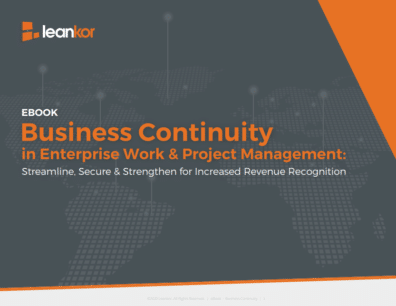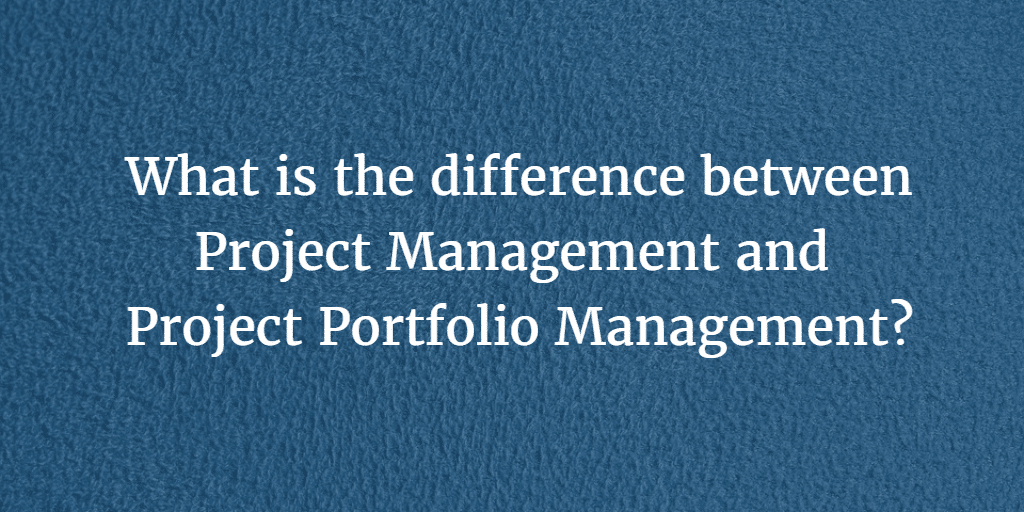Intro to PM and PPM:
No matter how capable your team, an enterprise lives or dies on the quality of its organization. A team of top-notch coders works no better than a group of neophytes if none of the team members are on the same page. Of course, once a company makes its first successful splash, the next step is to figure out how to expand into other projects and markets. In the end, an organization will determine whether the blood flows smoothly or clots and causes a heart attack–potentially leading to the enterprise’s death. However, keeping track of the myriad schedules, statistics, and logistics can be a daunting task–especially one a company gets large enough to focus on numerous projects at the same time. More and more, the top performing companies have recognized the value of incorporating software and other tools into the organization process. Still, this requires a clear understanding of what that process means and how to delineate obligations in responsibility. Deciphering this hierarchy of organization can be made even more difficult in a professional landscape that is regularly refining and specializing different scopes of an organization to achieve more efficient results. Here, it helps to understand the different levels of an organization, what they do, how they interact from one another, and the clear lines that demarcate one from the other.
Project Management:
By strict definition, projects are specialized event whereby co-ordinated and controlled tasks seek to achieve a clearly defined objective. In the course of this process, starting and completion dates are determined and cost, time, and resources are stipulated.
However, in layman’s terms, a project is simply the tasks and organization required to accomplish a specific goal. As such, larger considerations of strategy are left by the wayside.
Project Management, or PM, is the lowest order of management. Here, the focus is exclusively on the factors that directly impact the efficiency and effectiveness of the project to the exclusion of all other considerations.
This does not mean that the tasks of those working on the project are the only issues of concern; however, all other factors will impact those tasks in one way or another. As such, project management will often incorporate ancillary activities that may not be the project’s tasks but can facilitate or inhibit them.
For example, the engineers of a given project need not concern themselves with securing the resources used in the development of a new product. However, the project manager must ensure that those resources are available if and when the engineers require them.
Therefore project management may necessitate a focused scale, but the scope will generally extend a bit further. Of course, this is easier said than done, and keeping track of everything without a regimented system makes the organization an absurdly difficult task.
That is why many companies have seen the light and outsource much of their organizational tasks to software. With powerful tools at one’s fingertips, even inexperienced project managers can ensure a project stays on track.
However, with the modestly enlarged scope of a project’s needs, this means any system which tracks the PM will need some flexibility. A project management tool too focused on the granular will overwhelm even the most diligent of project managers into overlooking a potentially vital piece of information until it is too late.
Program Management:
A short word on program management. Depending on the size of the enterprise, it may make more sense to have a middle point of management between the project and the portfolio.
This is a common organizational approach when a company has numerous projects that are tangentially related but not directly so. It can also be used for projects that will require different approaches depending on the setting.
For example, if a company is developing a central processing unit, a graphical processing unit, and a motherboard while simultaneously developing an operating system, artificial intelligence, and virtual reality, they may well divide these different projects into programs of hardware and software respectively.
Here, the different projects are not always so divergent from some of the members but more so for others. As such, it can be convenient to group the projects which share more features in common under a program organizational model.
If the company is looking for management software, it is often better to get one that can scale appropriately and offers enough customization to handle the program level if needed. Of course, this depends on the company’s needs and resources as software which natively includes program management can occasionally carry an unnecessarily high cost.
Project Portfolio Management:
Project portfolio management, or PPM, is one of the newer developments in the organizational models. As such, there is a bit of confusion defining exactly what it is.
Many professionals, even those with a wealth of experience in the corporate world and with organizational structures, will often identify project portfolio management as synonymous with program management. However, this is a bit of a misnomer.
While it is true that program and project portfolio management occurs at similar scales of an enterprise, their scope often differs dramatically. Moreover, PPM is not at all tasked with the same duties as program management. In this regard, PPM and program management can be seen better as running parallel with one another rather than linearly along the organizational hierarchy.
While program management does incorporate the overarching strategic business objective of the company portfolio into its obligations, it is more focused on looking towards the individual projects within its purview. PPM, on the other hand, serves as a waypoint of sorts, facilitating continuous communication between the project management and portfolio management.
Keep in mind, for smaller companies and emerging startups, the project portfolio management level of organization is often the highest level of the hierarchy. It is not until a company becomes large enough to span across regions, cultures, and numerous fields and markets that dedicated portfolio management becomes a necessity.
As such, project portfolio management will often conduct many of the precursor tasks that might otherwise be under the purview of the classical portfolio management proper. One of the primary PPM project management tasks will be to identify new undertakings in the first place.
In this instance, the utilization of PPM in project management will begin by identifying potential new projects based on risk and return on investment. After analysis, either the PPM committee or a portfolio management committee will decide whether or not the potential project fits within the enterprise’s larger strategic business objective at that time.

Streamline, secure and strengthen project management operations and ensure enterprise-wide business continuity. Get eBook.
Portfolio Management vs Project Management:
With different focuses, tasks, and goals, understanding how to best utilize PPM in project management can be made easier by a thorough breakdown of the differences in portfolio management vs project management.
By recognizing the various organizational qualities of each stage, an enterprise is better able to delineate the tasks and define the goals of each. With a clear understanding what each stage should expect from these qualities, the strategic business goals can be made more efficient while risk minimizes and ROI increased.
Scale:
The scale of a project will be smaller and more granular. Conversely, the scale of a project portfolio will not only be larger but more diffuse as well.
Moreover, the PPM will need to factor the effects the individual project will have on both the enterprise in question as well as the market as a whole. Should a project meet the requirements of risk and ROI that the PPM identifies ahead of time, it still may require a reactive plan once completed that adapts and responds to the emerging effect the completed project will have on its market.
That being said, in terms of sheer resources, the scales of portfolio management vs project management can greatly differ. For instance, the time allotted an individual project is strictly designated with a clear start and completion estimate.
However, there is not necessarily a project portfolio example of this same dynamic. While project portfolio management may identify a span of time, a fiscal quarter for instance, for aggregate analysis, the specific span of time can easily change in response to the strategic business goal.
For example, consider a portfolio strategy which decided to analyze 2 fiscal quarters and report on the effectiveness of the portfolio strategy goals. However, after the first quarter, a new development with one or more of the project markets occurs which alters the risk assessment under which the business strategy was defined.
In this instance, it may not be prudent to simply pursue the original strategy which may be outdated and fail to incorporate a realistic assessment of the risk any given project now presents. As such, the project portfolio committee will likely reassess the portfolio and its strategy, potentially extending the reporting period to accommodate new goals.
Now, what was once a clearly defined time allocation has been amended to allow further analysis and an implementation of a new strategy. The primary difference in this scenario from project management is that the allocation of further time resources is not in conflict with the stated goals of the PPM.
In fact, the PPM is demonstrating its agility by responding to an emerging force and accurately assessing the needs of the portfolio.
Scope:
Similar to scale, scope defines the focus of attention. These two qualities will often work in conjunction with one another, but they can also diverge.
For instance, the scope of a project is necessarily narrow. The focus will need to be placed on specific tasks to the exclusivity of all others in order to maximize the results and efficiency of the project.
On the other hand, the scope of a portfolio is generally much broader. Encompassing an enterprise-wide strategy requires that a litany of factors not inherently related to completion of a project be considered.
For example, if a project demands the creation of software to accomplish some sort of task, say workflow management, the members of that project do not need to concern themselves with the marketing of that project once completed.
How the project is marketed and distributed once completed holds no bearing on what it takes to actually produce the software in question. However, the enterprise in charge of the project will need to determine a marketing strategy for once the software is complete.
This marketing strategy will, in turn, become its own project. Depending on the size of the enterprise, this project will either be included with the software project as a program or a portfolio.
Larger companies with numerous branches and divisions will generally take individual projects related to some goal and turn them into a program. Smaller companies which are more specialized will often skip the program phase and simply create a portfolio.
General Electric would likely opt to make a program from the prior example while a more specialized company like McAfee is liable to skip the program stage altogether and simply develop a portfolio. Regardless, the portfolio itself will collate all the different projects and/or programs under a larger philosophy which focus on market-wide strategy.
Remember, portfolio management is designed to manage dissimilar projects. For larger companies, this can include the development of products, the general research of materials or ingredients, the construction of storefronts and warehouses, and more. In this regard, a project portfolio example would be General Electric constructing a dam in rural China, developing a new kitchen appliance, and researching a new alloying catalyst.
Control:
The tasks of ppm project management will differ from company to company based on the ultimate organizational model. If the company is large enough to incorporate both a portfolio management and project portfolio management team within its structure, the project portfolio management will ensure that the projects selected provide a reasonable ROI for the potential risk. However, in this organization, the PPM will also often require regular updates of the project at predefined checkpoints or be made abreast of emerging developments that affect the project’s completion.
Should the enterprise not require a superseding portfolio management team and instead be better served with simply a project portfolio management approach, the PPM will assume the duties of portfolio management in full. However, neither of these scenarios dictate that the PPM will engage in the daily management of any given project.
In fact, should a project require further notice and action by the PPM, it is far more likely that the project management organization itself will be altered such that new PM will be required. Regardless, the task the project portfolio management undertakes, the PM will be concerned strictly with the management of the project and its requisite tasks alone.
Success:
What defines the success of a project should be fairly clear before its undertaking. If the project completes its predefined goal within the time designated and resource allocated, it is successful.
However, the definition of success for PPM can be more nebulous. In fact, project portfolio management will often assume the responsibility of determining the goals and standards of a given project in the first place. This is even more relevant if the company in question does not have a superseding portfolio management committee to direct large-scale strategies across numerous regions, cultures, or markets.
Still, a more apt project portfolio example of success can be found in the aggregate success of the individual projects selected. Should the various projects perform well and provide an expected ROI or better, the portfolio can be seen as successful.
Of course, considering that the portfolios and strategy goals are always changing, there never is a true “completion” for portfolio management. Thus, the success of a portfolio is always ephemeral and requires continued ROI and mitigation of risk–ideally, without end.
However, there are some general criteria by which this continual process can be defined. Primarily, the success of a portfolio will often be determined by the aggregate value produced for investors and stockholders. Granted, depending on the portfolio strategy, this may not be ascertained in a specified reporting period, but the strategy itself is likely to provide estimates for when the value can be said to mature.
Skillsets:
Considering the differences in scale, scope, and task, the skill sets of project management and portfolio project management may be complementary, but they are not the same.
PM skills will generally focus more on the ability to manage the individuals working on the project in question. The ability to direct and maintain vigilant oversight are crucial. Moreover, the foresight to see developing problems and the recognition of their potential solutions are also a necessity.
On the other hand, project portfolio management will generally require more skills focused on analysis. The ability to clearly identify risk and plan for its mitigation become paramount. Furthermore, a grand vision and keen eye for emerging opportunities that can generate a substantial ROI are also crucial. As project portfolio management does not often direct the activities of PM, the skill of effective delegation also weighs heavily.
Conclusion:
While portfolio and project management sustain one another, they are not at all the same thing. More appropriately seen as two sides of the same coin, PM is vital for ensuring the actual tasks which produce value are effectively managed.
On the other side of the coin, PPM is focused more on identifying which tasks can produce value in the first place and, potentially, how those projects should then be structured from an overall strategy perspective.
With differences in scale, scope, success, control, and skill sets, what makes a good project manager will not necessarily make a good portfolio manager–and vice versa. However, both levels of the organization will require awareness of and appropriate response to massive amounts of information.
As such, in order to ensure that the factors which influence the success of projects and portfolios, many top-performing enterprises make use of software tools that provide the ability to work on one or both levels. However, considering the wide variance of information and obligation, the tools in question must be selected carefully.






